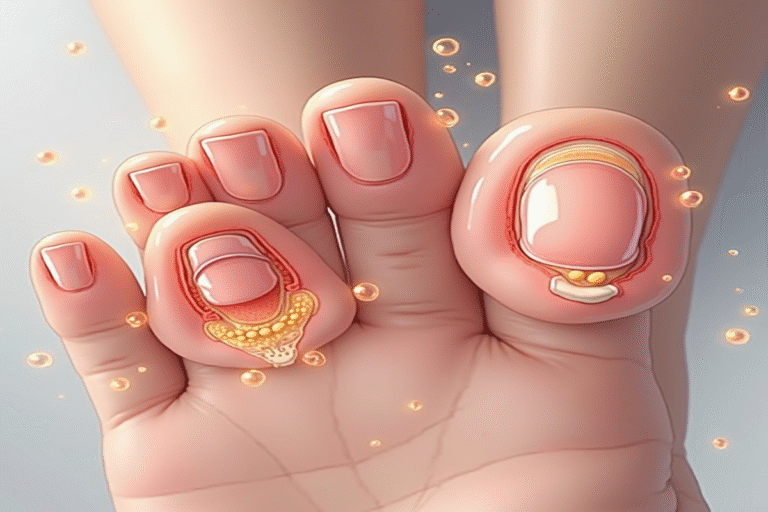Did you know that the thin keratin plates at the tips of your fingers can function like tiny health monitors? Fingernails aren’t just for scratching, protecting your fingertips, or holding nail polish—they’re actually remarkable windows into your overall wellbeing.
The Science Behind Your Fingernails
Fingernails consist primarily of a protein called keratin (the same material in your hair) and grow from the matrix—the half-moon shaped area at the base of your nail. The average growth rate is approximately 3.5 millimeters per month, which means a complete fingernail replacement takes about 6 months. This slow growth process allows nails to record various metabolic and health changes occurring in your body.
Colors That Communicate
The healthy nail bed normally appears pinkish, with good circulation underneath. However, various health conditions can alter this natural canvas:
- Yellowish nails may indicate fungal infections, but can also signal thyroid conditions, diabetes, or respiratory diseases. They might also appear in heavy smokers due to nicotine staining.
- Bluish tints can indicate low oxygen levels in your blood (cyanosis), which may reveal heart or lung issues. At severely low oxygen levels, fingernails can even appear purple.
- White nails (leukonychia) might suggest anemia, liver disease, or kidney failure. Some white spots indicate past injuries, while diffuse whiteness might signal more serious health issues.
- Dark lines beneath the nail deserve special attention, as they could indicate melanoma, a serious form of skin cancer. However, they can also occur as a normal variant in people with darker skin.
Texture and Shape: The Topography of Health
Researchers have documented numerous textural and shape changes that correlate with specific health conditions:
- Clubbing—when fingertips enlarge and nails curve downward—can indicate lung disease, inflammatory bowel disease, or cardiovascular problems. This change helps the body compensate for chronic low oxygen levels.
- Spoon nails (koilonychia)—nails that curve inward like scoops—often reveal iron deficiency anemia or hemochromatosis (iron overload). This shape results from abnormal iron metabolism affecting keratin production.
- Beau’s lines—horizontal depressions across the nails—show periods when nail growth slowed or stopped due to illness, chemotherapy, or major physiological stress. They are literal timestamps of past health events.
- Pitting—small depressions in the nail surface—often accompanies psoriasis or alopecia areata, reflecting disruptions in the nail matrix where new cells form.
Fascinating Nail Curiosities
Beyond clinical indicators, fingernails have some remarkable scientific curiosities:
- Fingernails grow faster on your dominant hand and during summer months, likely due to increased blood circulation.
- Nails do not continue growing after death. The skin around them retracts, creating the illusion of growth.
- The nail of your middle finger usually grows the fastest, while your thumbnail grows the slowest.
- Fingernails grow about four times faster than toenails, so a lost toenail takes much longer to replace.
- The chemical composition of your nails can reveal dietary patterns from months in the past, much like tree rings record environmental history.
The Nail-Microbiome Connection
Recent studies have found that fingernails harbor unique microbiomes—communities of bacteria different from those on the rest of your hand. These microscopic ecosystems can affect nail health and may reflect immune system function. Researchers are exploring whether nail microbiome analysis could one day help diagnose certain health conditions.
When Nail Changes Warrant Attention
While not every nail abnormality signals a serious health problem, some changes deserve medical evaluation:
- Sudden changes in all nails at once
- Dark streaks or spots without a clear cause
- Thickening or distortion along with pain
- Separation of the nail from the nail bed
- Infections that do not resolve
Our fingernails are remarkable evolutionary adaptations that not only help us manipulate our environment but also function as accessible health monitors. By paying attention to these tiny keratin windows, we can better understand the connections between different body systems and how changes within us become visible. The next time you look at your hands, remember: you are seeing more than just nails—you are observing a sophisticated health monitoring system shaped over millions of years of evolution.





